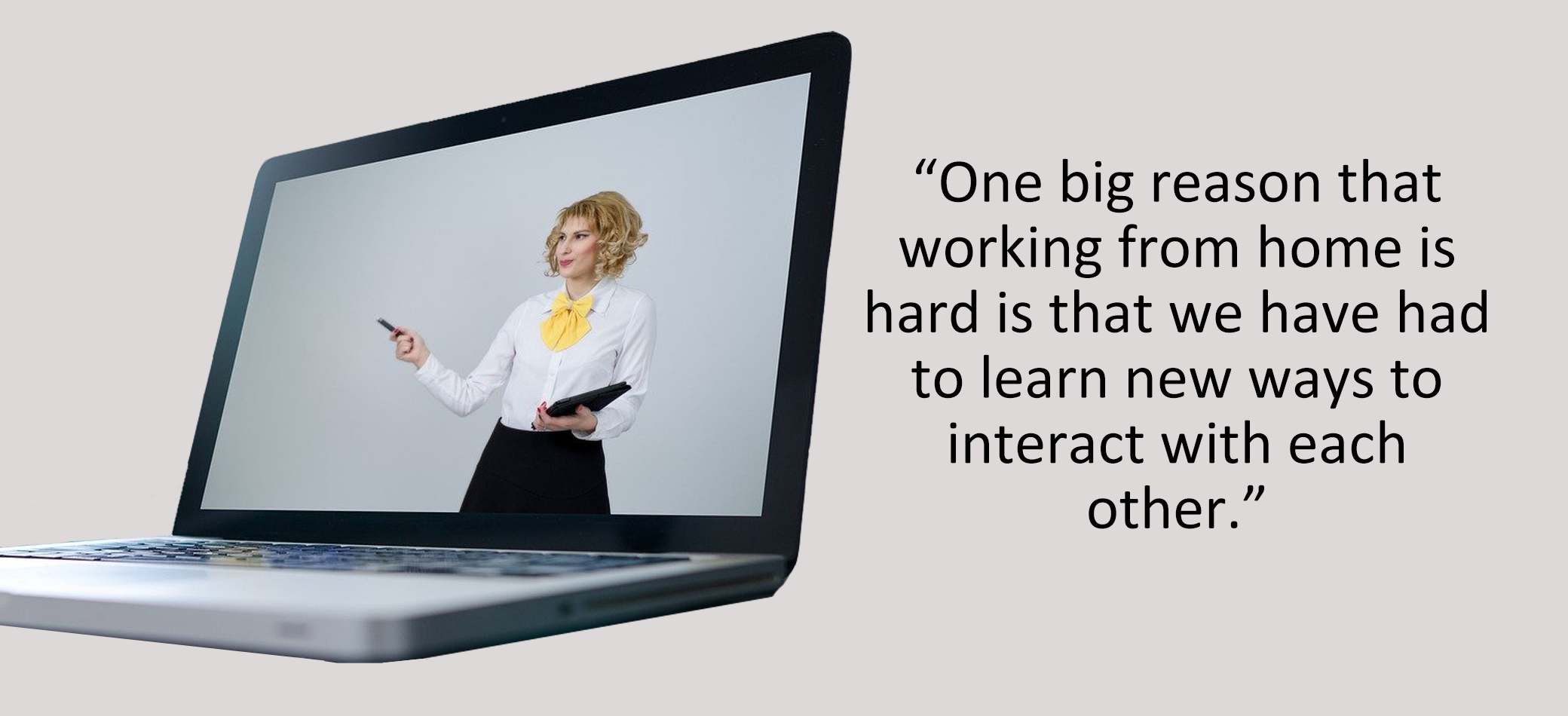The hidden costs of interaction in the age of COVID
Dr. Clay Spinuzzi
Professor for HDO and Rhetoric & Writing at UT Austin
June 10, 2020

On March 13, the day before spring break was to begin, the University of Texas announced that it was canceling class. By March 17, UT had announced that all remaining spring classes would transition online. Students—and faculty—were shocked, and we had to do a lot of work to figure out how to gracefully transition these classes. Some classes were easier than others—I imagine my writing classes were much easier to teach online than, say, dance classes or pottery classes. But that doesn’t mean the transition was easy.
Like professors at UT, many workers can plausibly work from home. In fact, according to one recent white paper, about 37% of Americans (and about 46% of people in the Austin-Round Rock area) could work from home. But although we can, many of us are discovering that working from home is far from ideal. And the problems go well beyond lacking childcare or comfortable seats. Videoconferencing and email are wearing us out. We find it harder to get motivated and organized. Our work-life boundaries are hard to maintain. We have had to make lots of adjustments to our lives, and our work is consequently suboptimal.
But beyond those problems, one big reason that working from home is hard is that we have had to learn new ways to interact with each other. To understand why, let’s talk about three layers of interaction that are often sandwiched together: Communication, coordination, and collaboration.

Communication is basically the act of transferring information from one person to another. And over the last century, our communication tools have been radically expanded. Fifty years ago, office workers mainly communicated face-to-face, or with typed memos that had to be moved through interoffice mail, or occasionally with phones and telegraphs for specific applications. That is, most work communication was done in close proximity because other avenues were relatively slow and expensive.
Today, that’s no longer the case. Most of us have a phone in our pocket and a laptop in our bag, and we can communicate via email, texting, Slack, Discord, Zoom, Google Docs, and many, many other options. Communication is cheap: a lot cheaper than typing a memo and physically moving it from one end of the org to another, or mailing it to another branch. And it’s fast: many of our options (videoconferencing, phone calls) are synchronous, and even asynchronous forms of communication (email, texting) are much faster than interoffice mail was 50 years ago. No wonder so many people have been able to keep working from their homes during a pandemic.
And because communication is so much easier, cheaper, and more immediate, so is coordination: the act of meshing our efforts with those of others. When we have to coordinate with each other—for instance, supplying information for a report or updating our milestones on a project—we can do that almost instantaneously, even if we are on different sides of the globe. In fact, these big changes in communication and coordination have driven equally big changes in how we organize work over the last fifty years: today’s organizations are much less likely to keep all of their functions under one roof, instead outsourcing their noncore functions to other companies.

In 1970, a company might maintain departments for all the functions on which it relied, from advertising to custodial work. In 2020, the company likely hires an advertising agency and contracts a custodial service—leaving the company to focus on its core mission and competencies. We also organize more work as projects: temporary teams of specialists come together, attack a project, then disperse when that project has been completed. Because digital technologies have made communication so fast and cheap, this project-oriented mode of work has been a lot easier to accomplish. As a result, we were working with remote coworkers long before we received shelter-in-place orders.
But collaboration—working with others toward a shared objective—is still hard. And in some ways, it is getting even harder. That’s because when we collaborate, we have to agree what our shared objective is and how we want to achieve it. And because communication and coordination are so much easier, we find ourselves collaborating more broadly, with people who don’t share our experiences or professional outlook, and maybe don’t even work for our company. These people might not—probably don’t—see the project the way we do.
Consequently, to collaborate effectively, we actually have to build a shared background as we work together. And that means more communication and coordination, and just as importantly, mindful communication and coordination in which we have to synchronize our expectations and understand each others’ perspectives. And here’s the rub: before the pandemic, most of us had the chance to interact with our teams face-to-face, allowing us to work out those expectations implicitly. We could “read the room,” chat in hallways, and touch base in offices, so we could at least come to agreement locally. But now we don’t have those resources, and we have to synchronize those expectations using narrower, more formal communications channels. It turns out that that’s really hard to do in a Zoom meeting.

When the pandemic started, those of us who are used to working online figured it would be harder, but we would make it work. And we have. But part of what weighs on us is the hidden cost of synchronizing expectations, which adds a little more labor and effort to every email and Zoom meeting. We can’t make that labor go away, but we can become mindful of it, and perhaps address it explicitly in our work interactions.
Clay Spinuzzi is a professor of rhetoric and writing at The University of Texas at Austin. He also teaches in HDO’s Master’s Degree program and our Professional Training series. He and his rhetoric and writing colleagues are developing new HDO Certificate Programs focused on digital storytelling, writing for social change, collaborative writing, writing for small business, and several other topics. Click Here to be notified when these programs launch.

